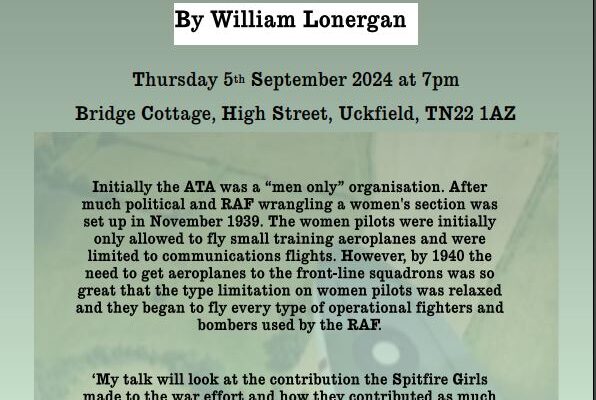Thursday 5th September 2024 at 7pm
Talk by William Lonergan
When it became obvious that war was going to break out by 1940, it was realised that an organisation would be needed to deliver aeroplanes to operational squadrons from the factories and maintenance units and to provide communications flights between RAF units. The organisation, subsequently called the ATA, Air Transport Auxiliary, was set up in 1938 by Gerald d’Erlanger, a director of British Airways Ltd who suggested to the Air Ministry the idea of a pool of ferry pilots in to free up RAF pilots for active duty in the event of war – using civilian pilots, many of whom had flown in WW1.
Initially the ATA was a “men only” organisation. After much political and RAF wrangling a women’s section was set up by Commander Pauline Gower in November 1939. The women pilots were initially only allowed to fly small training aeroplanes, such as the Tiger Moth and were limited to communications flights. However, by 1940 the need to get aeroplanes to the front-line squadrons was so great that the type limitation on women pilots was relaxed and they began to fly every type of operational fighters and bombers used by the RAF.
Overall, there were 168 women pilots, from Britain, Canada, Australia, New Zealand, South Africa, the USA, the Netherlands, Argentina and Poland.
These women pilots came from a wide variety of backgrounds and ranged from the “Glamour Girls” who grabbed the attention of the press and the young RAF pilots to the “Queen Bees” who ran the all-women ferry pools spread around the UK.
My talk will look at the contribution the Spitfire Girls made to the war effort and how they contributed as much to winning the war as the operational pilots of the RAF, Army and Fleet Air Arm.

